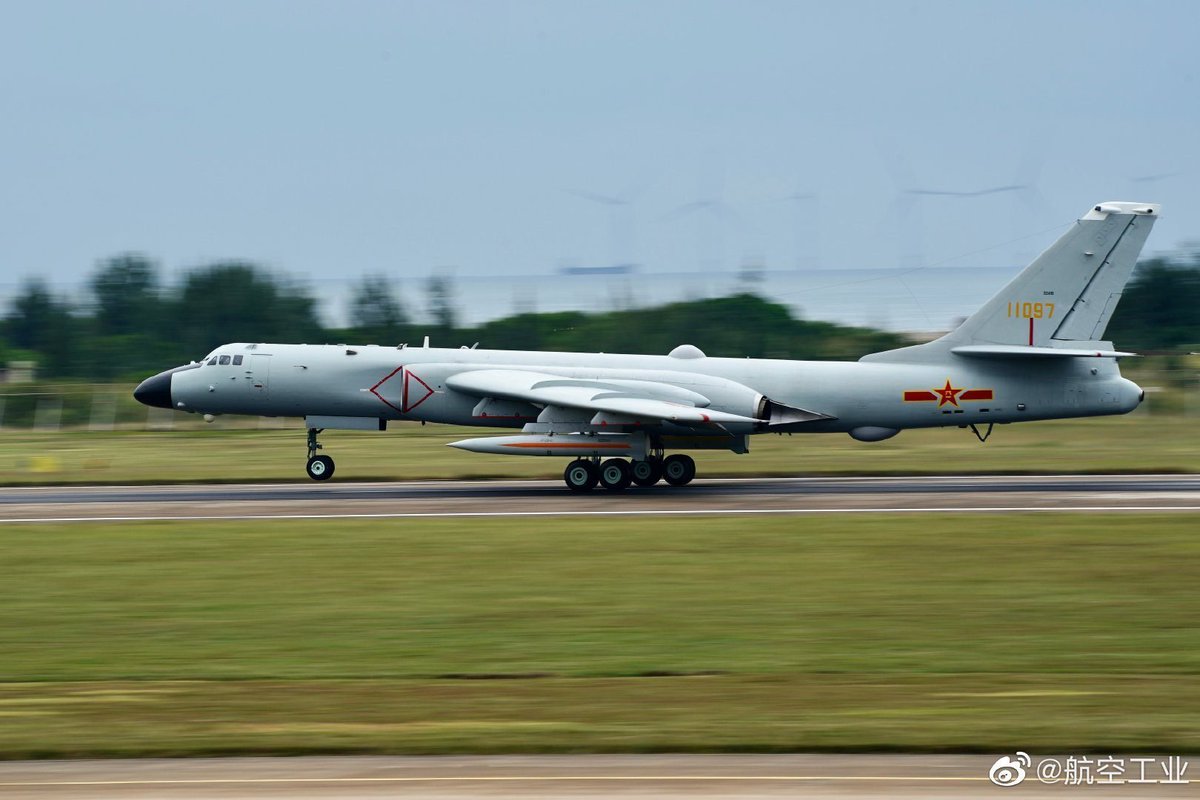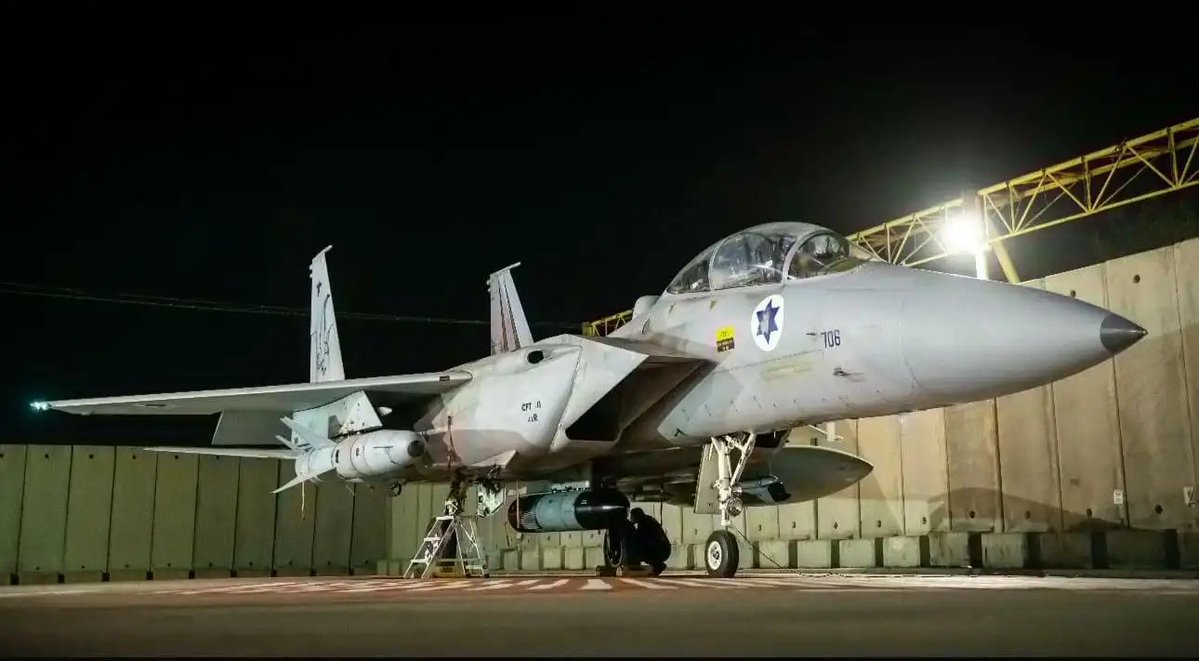1/n | The Bofors L70 and PG-99 are the most prevalent radar-guided towed AA guns in the Indian Army and PLAGF respectively. Here we would compare their effectiveness considering various factors. A long 🧵: 
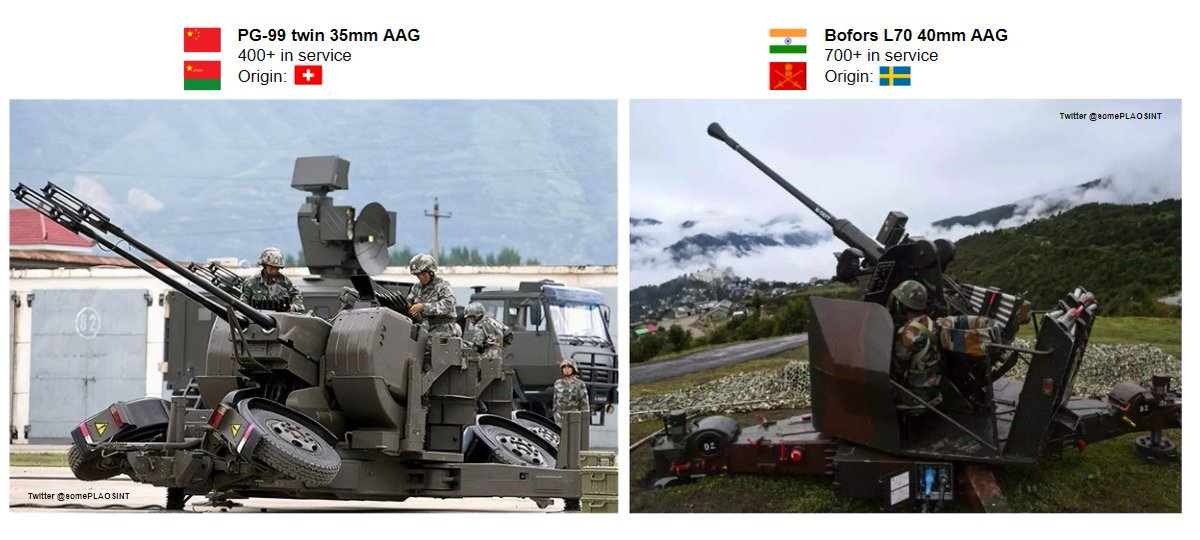
2/n | Here we can compare the structure and equipment of a PG-99 gun crew from the PLAGF and an L70 gun crew from the IA. On the surface, they are very similar, with 9-10 crew members, 1 gun, 1 generator trailer and 2 trucks. 
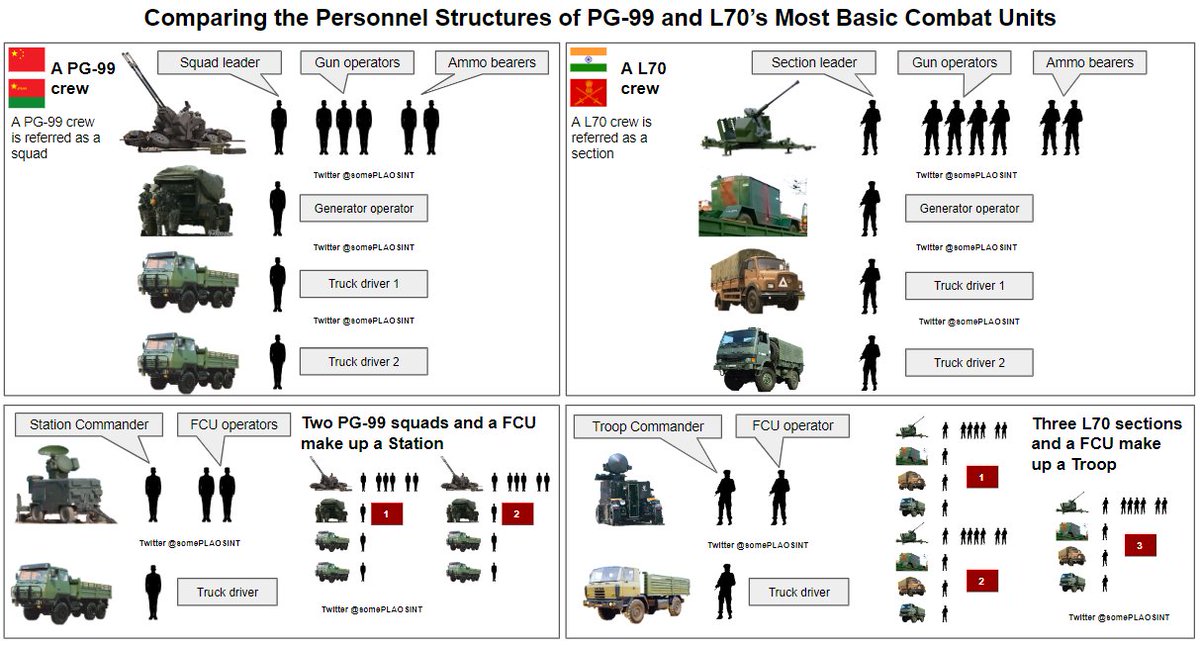
3/n | There are a few factors when comparing the effectiveness of AA guns. The first is the cyclic rate, where the PG-99 has a clear edge. The twin-barrel PG-99 can fire 1100 rounds per minute which is equivalent to 5.48 times of the 240 rpm of IA’s L70. 
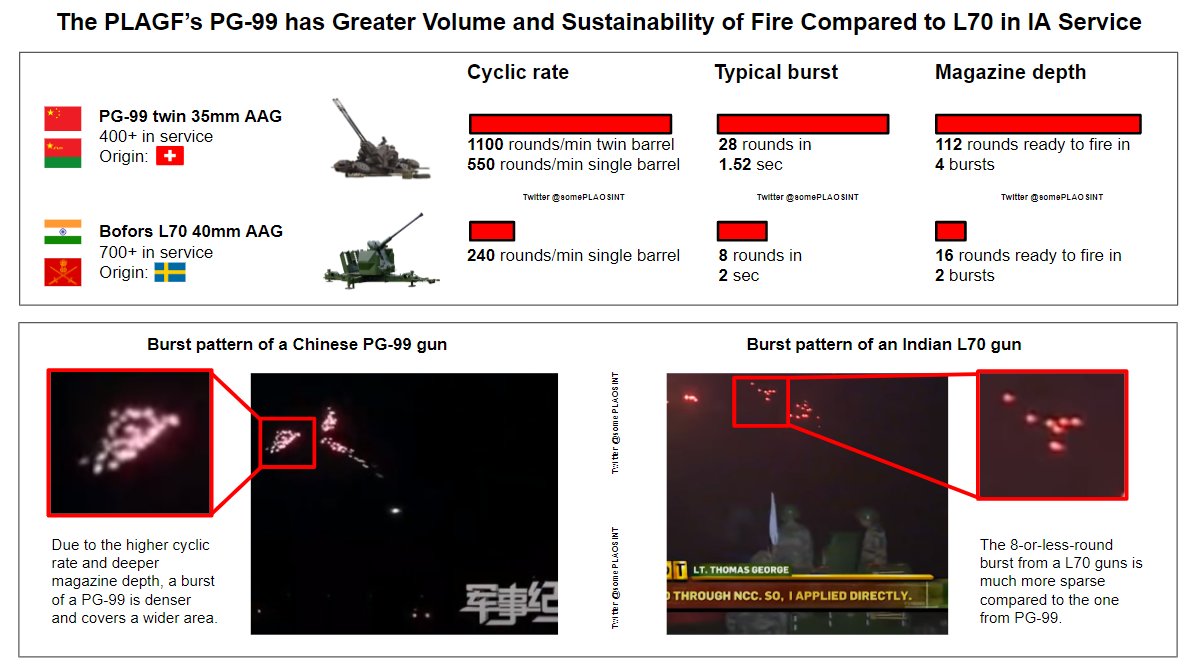
4/n | During engagement, AA guns fire with bursts. A typical burst from the PG-99 is 28 rounds, while only 8 for the L70. And due to the faster cyclic rate, it took almost the same time for both guns to unleash one burst. https://t.co/vDVRZkj0vStwitter.com/i/web/status/1…
5/n | The types of shell used are another differentiating factor. The 35mm PG-99 fires exclusively contact fuse shell. This means the shell will only explode when hitting the target. While the L70 fires both contact and preformed fragmented cubes with proximity fuse (PFFC) shell. 
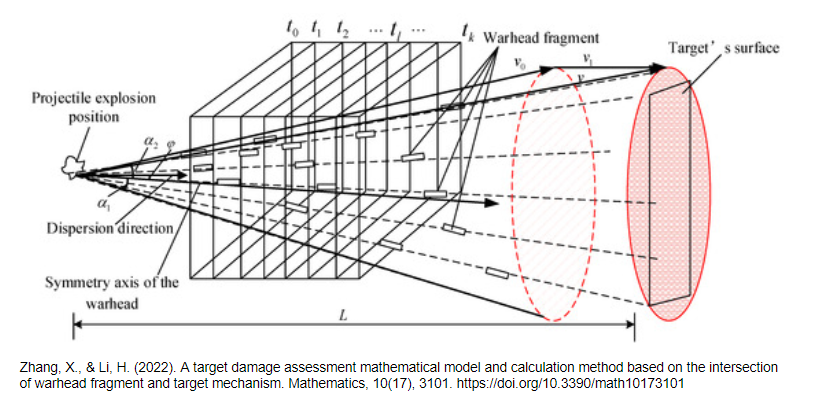
6/n | 1 PFFC shell from L70 is more effective compared to 1 contact fuse shell from PG-99. It can negate the cyclic advantage of the PG-99. To compare how many L70 guns are equivalent to 1 PG-99 gun, the ratio of PFFC/contact fuse shell effectiveness is required.
7/n | Here, PG-99/L70 gun effectiveness ratio is a function of the PFFC/contact fuse shell effectiveness ratio. If 1 PFFC shell is 5+ times as effective than 1 contact fuse shell and if an L70 fires only PFFC shells in an engagement, then 1 PG-99 is less effective than 1 L70 gun. 
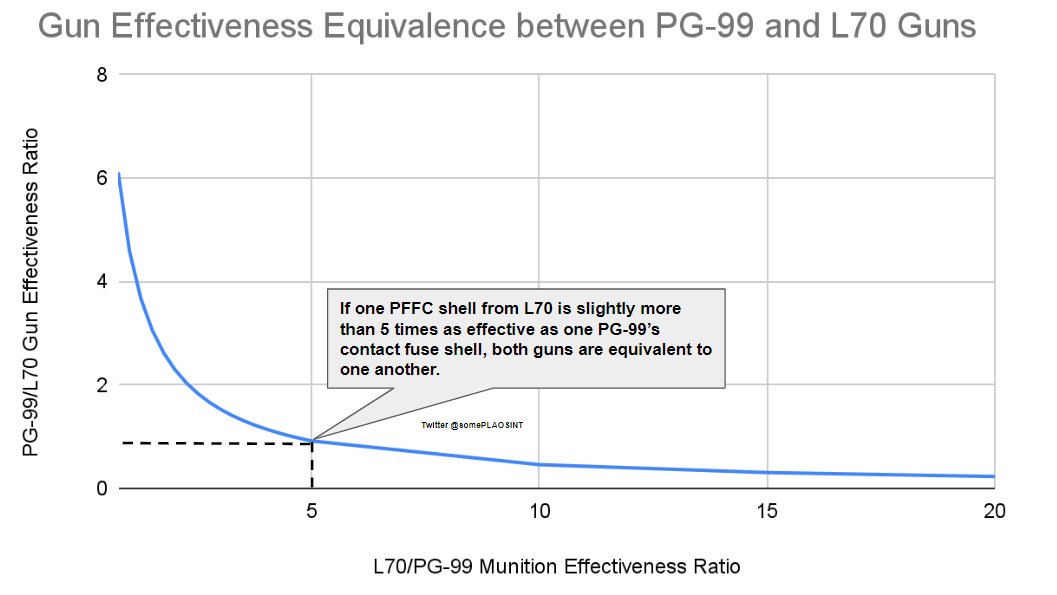
8/n | Higher effectiveness of the PFFC shell comes with a substantially higher price tag. For this reason that in almost all existing footage for IA AD training, contact fuse shells are exclusively used with L70. Munition mix is another variable when comparing gun effectiveness. 
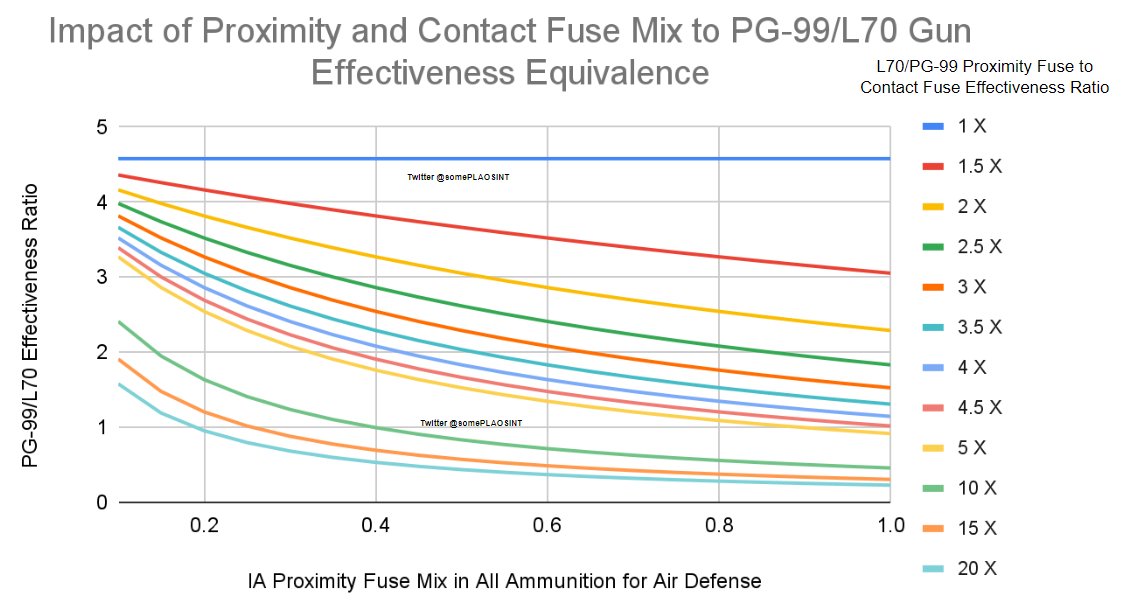
9/n | A mix of shell types would be used during an engagement to balance effect and cost. The mix of PFFC shells in the total munition, plotted on x-axis, determines the comparison with PG-99. Different lines represent different effectiveness ratios between PFFC and contact fuse. 

10/n | Take the yellow 5X line as an example, if 1 PFFC shell from L70 is 5 times as effective as 1 contact fuse one from PG-99, then with PFFC shells accounting for slightly higher than 80% of total munition fired, 1 L70 would be as effective as 1 PG-99. 
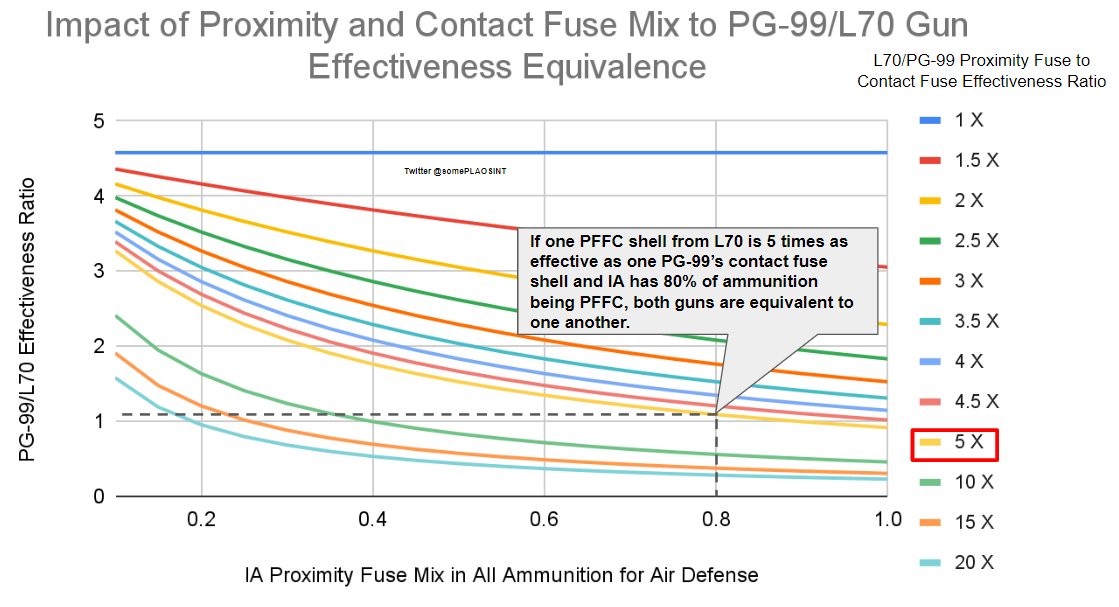
11/n | If the IA couldn't guarantee 80% mix of PFFC due to cost/logistical issues, the L70 would be at a significant disadvantage. At 40% mix of PFFC, 1 PG-99 would be as effective as 2 L70. Then a PG-99 station with 2 guns can be more effective than a L70 troop with 3 guns. 
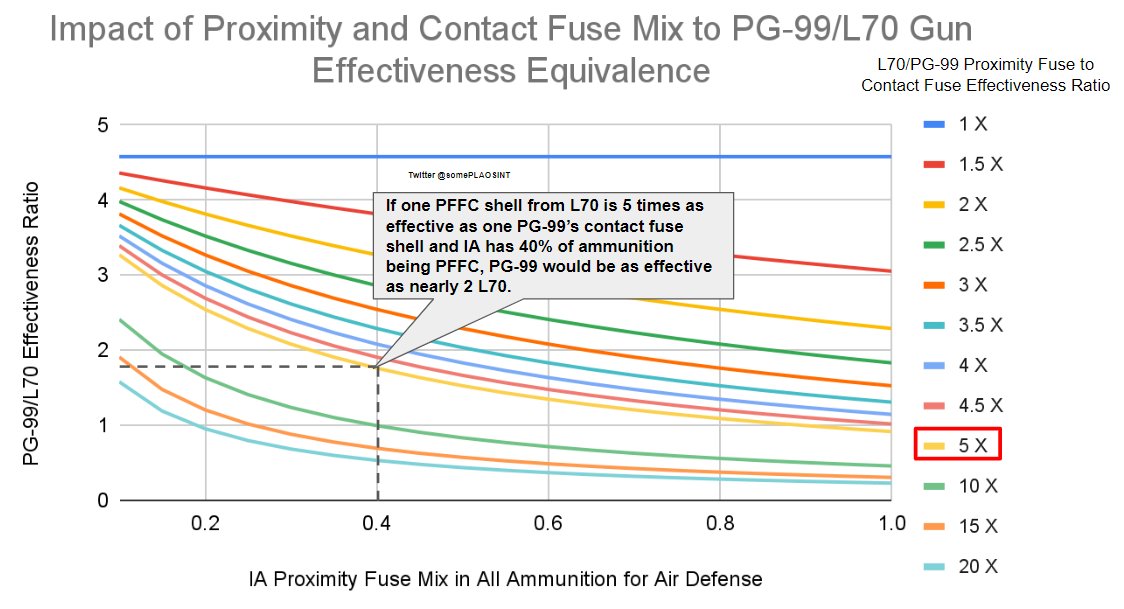
12/n | Below are 3 types of scenarios, ranging from PLAGF’s PG-99 coming on top to a draw and then to IA’s L70 coming on top, that we can assume when comparing the overall effectiveness (kill probability) of PG-99 and L70 and their respective units. 
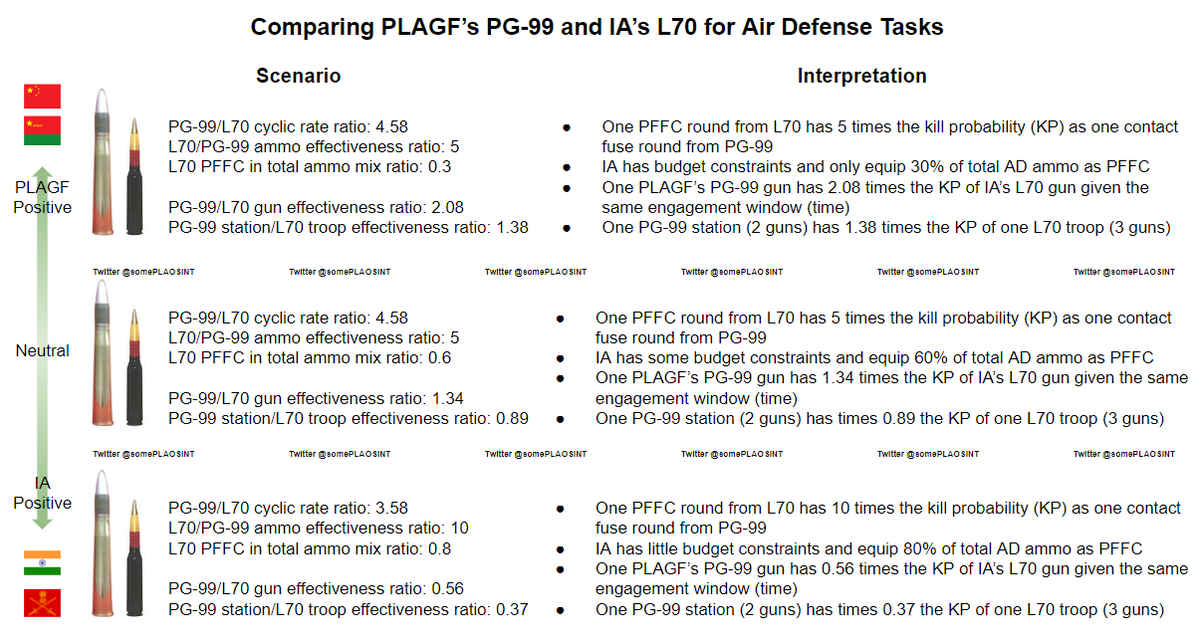
13/n | Though the PG-99’s ammunition is less effective, it being smaller in size does provide logistical advantages. The PG-99 fires 35X228mm cartridge while the L70 fires 40X365mm. 
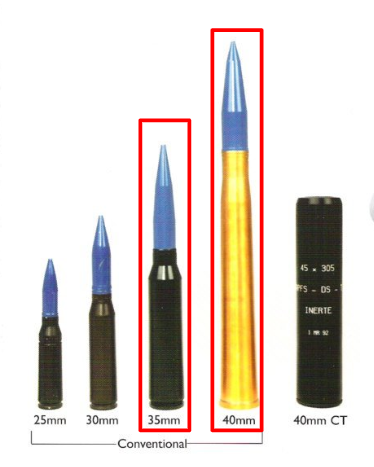
14/n | Size of the ammunition matter in logistics, the packaging matters more. After all, ammunition is carried in boxes and loaded onto trucks. From comparing ammo boxes between PG-99 and L70’s respective cartridges, given same space, PG-99 can bring 15% more number of rounds. 
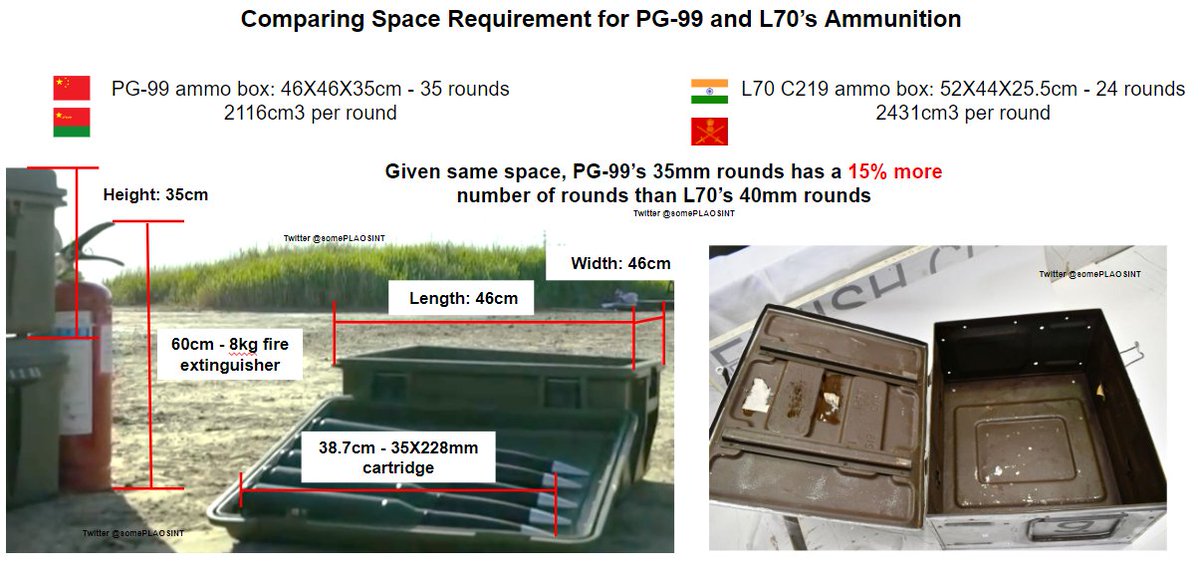
15/n | A PG-99 gun crew has further advantages in logistics because the trucks are 6X6 with double cab that fit all 9 crew members. While the IA’s L70 crew uses 4X4 trucks with single cab. 6/10 crew members need to sit in the back taking up space. A PG-99 crew has 65% more space 
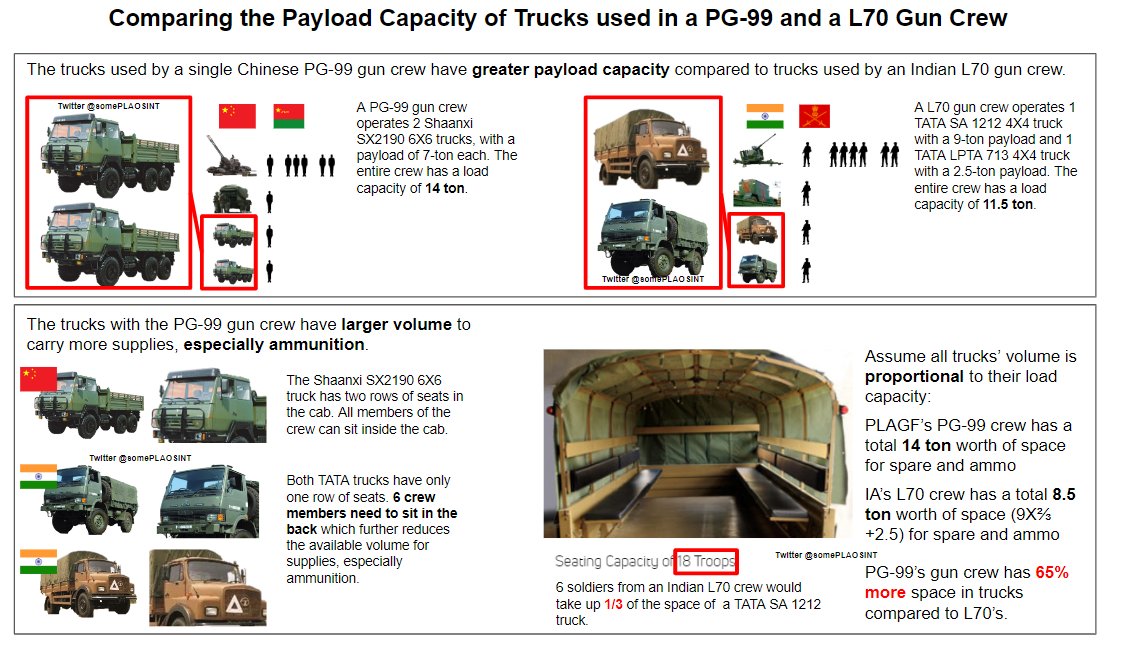
16/n | For simplicity (limit of my knowledge) of this thread, there are a few additional factors that have significant impact on the comparison of PG-99 and L70, are not quantified. Namely the ballistic properties, the effectiveness of the FCU, and deployment time.
17/n | The PG-99 gun and its 35X228mm cartridge provides 1175m/s muzzle velocity compared to the 1005m/s from the L70 and 40X365mm cartridge. Adding greater ballistic coefficient, the 35mm rounds from PG-99 can better retain speed and energy making them inherently more accurate.
18/n | PG-99 is also leading in fire control. The giant muzzle device of the PG-99 measures the speed of each round as they are leaving the barrel. This info is fed back to the fire control system to make corrections for the next burst. This is missing on most of IA’s L70 gun.
https://twitter.com/someplaosint/status/1658694241764388864
19/n | In terms of ease of deployment, the L70 is also at a disadvantage as the transition from transportation to deploy mode is fully manual with many steps.
https://twitter.com/someplaosint/status/1677161162763300867
20/n | The PG-99 on the other hand has a set of electric-hydraulic systems for the transition from transportation to deployment. This reduces the deployment, withdraw time and helps better conserving the crew’s energy.
21/n | END. Next thread I will talk about PG-99 and L70’s future in their respective militaries, stay tuned.
• • •
Missing some Tweet in this thread? You can try to
force a refresh







